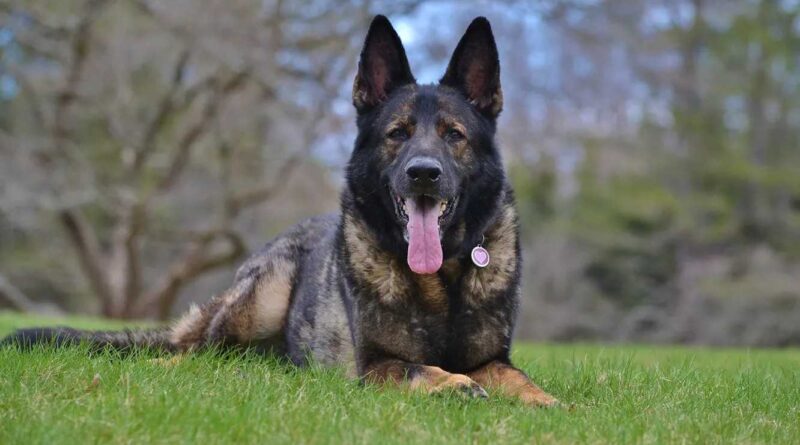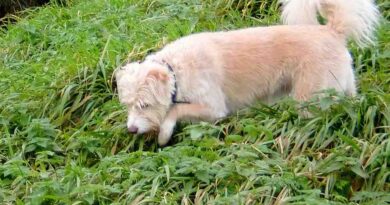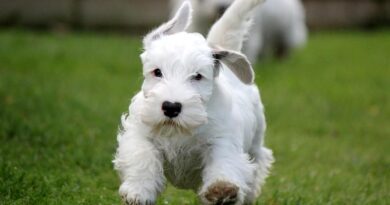Sable German Shepherd
What Makes the Sable German Shepherd Unique?
The Sable German Shepherd stands out for its color, which is often linked to the wolf ancestry of the breed. The Sable coat, with its mix of black and red tones, can cover the entire body of the dog, with black tips on the hair adding to its striking look. This classic German Shepherd color is often perceived as the true color that closely matches the breed’s genetic history. The Sable German Shepherd isn’t just about appearance; its dominant gene comes from the same DNA that gives it a strong, agile, and intelligent personality. Originally from East Germany, particularly the DDR bloodlines, these dogs were known for being loyal, brave, and excellent guard dogs. Their wolf-like appearance makes them highly recognizable, and they remain a quintessential dog for families, whether for companionship or protective work.
The Cold War Roots of the DDR German Shepherd
The DDR German Shepherd originated during the Cold War era, specifically in East Germany, under the strict control of the Communist Party. The breeding program was designed to produce German Shepherds with exceptional qualities for military and police work. These dogs were bred to withstand frigid winter temperatures and harsh conditions, making them highly durable and capable in extreme environments. The DDR bloodline of German Shepherds was carefully maintained to ensure that only the strongest and most capable dogs were part of the program, making them ideal for high-pressure roles during this tense historical period.
Preserving the Legacy of the DDR German Shepherd Bloodline
After East and West Germany reunited in 1990, the need for DDR German Shepherds decreased, as their primary roles in military and police work were no longer in high demand. This led to a tragic period where many of these incredible dogs were either abandoned, put down, or sold off. However, true breed-type enthusiasts recognized the importance of preserving the DDR bloodline. Despite the declining demand, these passionate individuals worked tirelessly to preserve the unique qualities of the DDR German Shepherd, ensuring that this special bloodline would continue to thrive even after the Cold War era ended.
DDR German Shepherds Are Excellent Trackers
DDR German Shepherds are known for their innate ability to be excellent trackers, especially in search and rescue missions. Their qualities make them stand out, particularly their ability to handle tough weather conditions and difficult terrain. As a personal experience, I’ve seen DDR German Shepherds in action during disaster situations, where they can quickly locate people trapped in rubble. These German Shepherds are bred to traverse almost any environment with ease, whether it’s snow, rain, or rough landscapes. Their natural instincts and training are perfectly suited for rescue missions, making them indispensable in life-threatening situations.
German Shepherds Can Be Good with Young Children
DDR German Shepherds have a strong history in police and military work, but they can also be great companions for young children. Despite their serious background, these intelligent dogs are known to be protective and playful, making them wonderful playmates for tots when properly trained. Starting at a young age, it’s important to socialize your DDR German Shepherd with youngsters. From my experience, using reward-based training methods, like high-value treats and praise, helps them quickly learn basic commands and even more complicated tricks. This breed is not just a strong canine for work, but a loyal family member too.
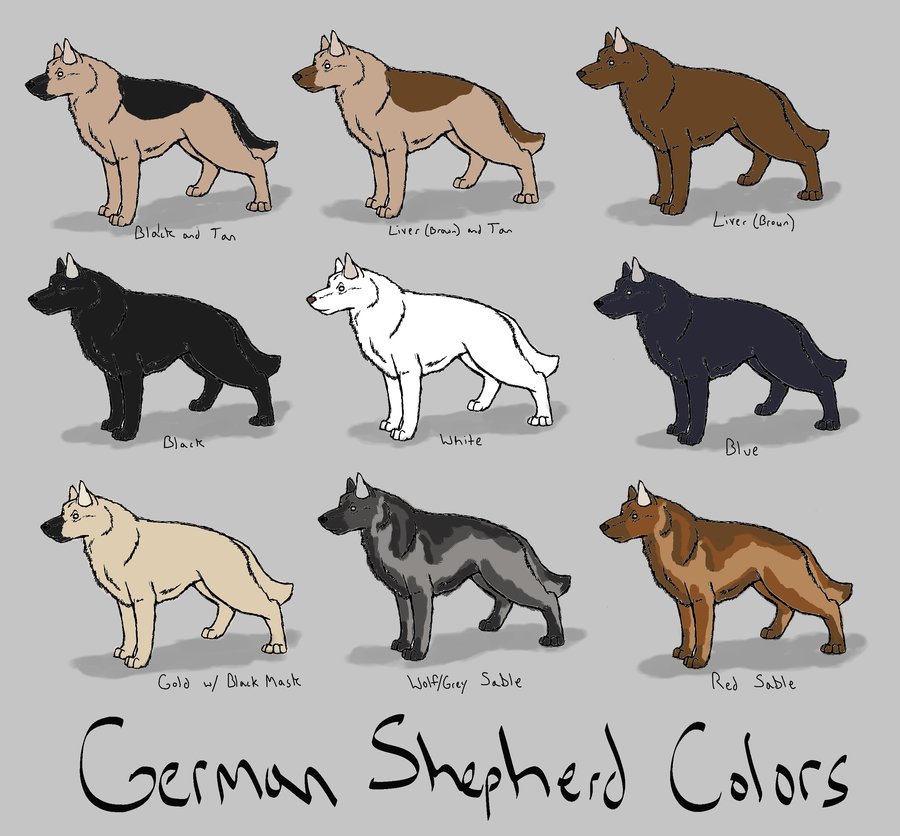
Are there any differences between black and red- or sable-colored German Shepherds?
When comparing black, red, and sable-colored German Shepherds, there are no major functional differences between them in terms of temperament or health. The color variations are primarily based on personal preference and breed standards. However, I’ve noticed a common trend where Black and Red GSDs are more often bred as show dogs, especially for the show ring, while Sable GSDs come from working-bred stock. Sable-colored GSDs are excellent working dogs and also make great family pets, just like their Black and Tan counterparts. In my experience, these color variations don’t affect their capable and intelligent nature, as all colors are still recognized by KC shows and perform equally well whether in work or as companions.
Exploring the Unique Attributes: Sable vs. Show Line German Shepherd Dogs
Sable German Shepherds and Show Line German Shepherds both captivate the hearts of dog lovers, but they have distinct characteristics. Sable German Shepherds are known for their unique coat pattern, with a beautiful blend of black, brown, and tan hairs that gives them a striking appearance. These dogs excel in working roles due to their intelligence, versatility, and agility, making them ideal for search and rescue, police, and military service. Their intense loyalty and protective instincts also make them excellent family companions. Personally, I find the Sable German Shepherd’s adaptability in different environments to be unmatched.
In contrast, Show Line German Shepherds are bred with a focus on conformation, aiming for an impeccable physical appearance and graceful movement. They are often selected for their elegant appearance and are frequently seen in kennel club shows. These dogs typically have a black and red or black and tan coat color, with a dense, plush double coat. Their calm and confident temperament makes them wonderful family pets, and their stunning looks are a result of selective breeding for show standards. However, they may not be as versatile in working roles compared to their sable counterparts.
When comparing Sable German Shepherds to Show-Line German Shepherds, the key differences lie in their backgrounds and roles. While both share high levels of intelligence, the Sable German Shepherd is more associated with intense working roles, driven by its strong protective nature and agile abilities. Meanwhile, Show-Line German Shepherds are bred for their refined appearance and composed temperament. The choice between these two types depends on whether you’re seeking a more active working dog or a graceful show dog for your family.
Different Types of Sable German Shepherd Mixes
There are many different types of Sable German Shepherd mixes, each offering unique traits. One popular mix is the Shollie, a German Shepherd x Collie, known for its intelligence and energy. The Shepweiler, a German Shepherd and Rottweiler mix, combines strength and loyalty. The Saint Shepherd is a cross between a German Shepherd and a Saint Bernard, making a large and gentle family companion. Another is the Sheprador, a blend of German Shepherd and Labrador, which is friendly and active. For a smaller mix, the Beagle Shepherd mixes the German Shepherd with the Beagle, known for its curiosity. The Gerberian Husky, combining the German Shepherd and Siberian Husky, results in a striking, energetic dog perfect for colder climates.
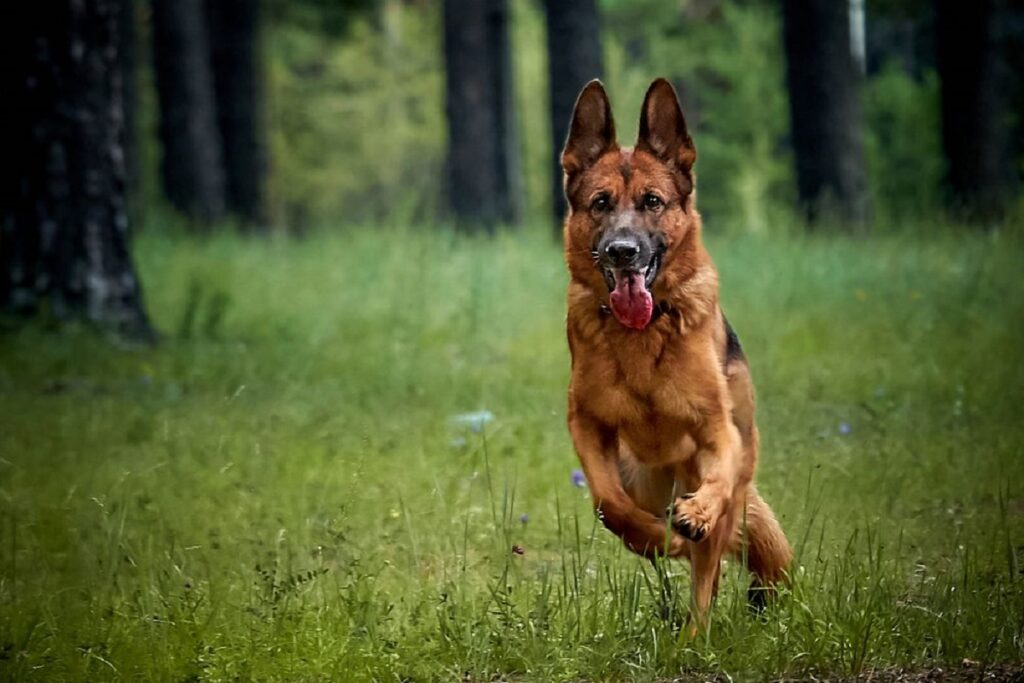
Let’s Talk about it Unique Features Of The Sable German Shepherd
Characteristics
The Sable German Shepherd is a variation of the standard GSD, known for its unique characteristics and rare color. Unlike other German Shepherds, the Sable coat makes these dogs stand out, often making them more expensive. While a standard GSD puppy might cost between $300 and $700, you can expect to pay around $800 to $1500 for a Sable GSD. From my experience, Sable German Shepherd puppies are typically born in litters of 5 to 9 pups, which is normal for the breed. Their loyal temperament and distinctive look make them a popular choice for dog lovers willing to invest in this stunning variation.
Appearance
The Sable German Shepherd looks similar to other German Shepherds, with the main difference being their color of fur, which creates a more wolf-like appearance. This large breed dog has males that typically weigh between 75 and 95 pounds and can stand up to 26 inches tall, while females are slightly smaller, weighing 55 to 73 pounds and standing around 24 inches. These dogs have a domed shape to their head, a long, square muzzle, and erect ears. Their long necks sit low when running or prowling, giving them a strong and agile look that resembles their wolf ancestors.
Coat
Sable German Shepherds have thick double coats that are perfect for their role as working dogs. These coats can be medium or long, with a dense guard layer on top and a softer undercoat underneath to keep them warm in colder weather. From my experience, these dogs tend to shed quite a bit, so if you have doggie allergies, regular grooming is essential. A proper grooming regime will help reduce the amount of shedding and keep your home cleaner. Routine brushing is key to keeping their beautiful coat in good condition while managing the shedding.
Color
The Sable color in a German Shepherd is unique because each hair has a black tip, giving the coat a dynamic look. The rest of the hair can be a different color, usually in shades of tan. This creates a beautiful blend of tones across the coat. While Sable is a distinctive look, German Shepherds can also come in a wide range of colors like white, blue, liver, red, and even gold. However, the Sable coat stands out for its natural, wolf-like appearance that is both striking and versatile.
Temperament
The temperament of a Sable German Shepherd is deeply connected to its loyal and family-oriented nature. These dogs are known for being alert and protective, always ready to protect their family. Early socialization is important to ensure they interact well with young people and others. Sable German Shepherds are very active and need plenty of physical exercise and mental stimulation. If left alone for long periods, they can become bored and may show destructive behaviors. It’s crucial to spend time with them and provide proper training so they understand what behaviors are desirable.
Lifespan
The average life expectancy of a Sable German Shepherd typically ranges between 9 to 13 years. These dogs, known for their striking sable coats and the intelligence of a typical German Shepherd, can enjoy a healthy and active life with proper care. To ensure they live to the upper end of this range, regular vet check-ups, a balanced diet, and plenty of exercise are key. It’s also important to monitor for common health issues that may impact their life expectancy as they age.
Known Health Issues
Sable German Shepherds, like many large dogs, are prone to certain health problems, particularly hip and elbow dysplasia. These conditions involve the malformation of joints, which can be painful and may worsen over time, leading to lameness. Regular vet checkups can help spot early signs of these issues. To minimize the risk, it’s important to choose a reputable breeder who provides health clearances for the parents. This helps ensure that your dog is less likely to develop such problems in the future.
Food And Diet
A Sable Shepherd, being a large dog, needs a diet that is specifically formulated for its size and activity level. High-quality dry kibble or raw food like CRAVE Grain Free High Protein with salmon or chicken provides essential nutrients like proteins, fats, and carbohydrates. For a puppy, feeding three to four times a day helps manage their growing needs, while adults need around 1500 calories per day, depending on their lifestyle and weight. Always check the food packet for guidance and ensure meals are balanced with essential vitamins and minerals. Since they’re predisposed to bloat, avoid large meals at once, as this can lead to a twisted stomach, which can be fatal.
Exercise
As a working dog breed, the Sable German Shepherd has high exercise needs to stay happy and healthy. This active dog requires 60 to 90 minutes of physical and mental stimulation each day, whether through long walks, playing games, or running in a big yard. If you live in a small apartment, providing adequate exercise is crucial to prevent unwanted destructive behaviors caused by boredom or frustration. Activities like hiking or swimming are great for variety. Be careful with puppies, as too much activity can be detrimental to their skeletal development. A good rule of thumb is about 5 minutes per month of age; for example, a four-month-old GSD should get around 20 minutes of exercise.
Family Compatibility
The Sable German Shepherd is a loyal and protective family dog that thrives on physical and mental stimulation. This breed is known for its strong guard instincts, often barking to alert its family of a perceived threat. With proper training and early socialization, especially when introduced to children, they can be incredibly loving and well-behaved. They love playing and enjoy having a yard to run in, making them great for active families. Although they have a high prey drive, when socialized properly, they can get along well with other pets and become a cherished, loved member of the household.
Training
The Sable German Shepherd is highly intelligent and relatively easy to train when started young. Using positive reinforcement methods, like verbal praise and treats, helps encourage good behavior. They respond well to these reward techniques, and with enough consistency, you can teach them complex tasks. Avoid trying to punish or scold them, as this can make them more stubborn. Since this breed has a natural aptitude for exercise and problem-solving, training them with activities like hiding objects for them to sniff out can tap into their skills, similar to what detectives use them for.
Socializing
Socializing a Sable German Shepherd is very important, especially since this working breed can be naturally aloof and protective. To help them become well-rounded, start early by calmly introducing them to different sights, sounds, smells, places, and people. Exposure to children, other animals, and new environments should be done in a calm and controlled manner. This helps them feel less afraid and reduces their natural prey drive. Continued socialization ensures they grow into confident dogs, less likely to see every new experience as a threat, allowing them to enjoy being around others.
Grooming
The Sable German Shepherd has a double coat, which means they shed quite a bit, especially during shedding seasons. To keep shedding manageable, regular brushing is key. For medium to long-haired varieties, brushing twice a week is good, but daily brushing helps prevent knots and tangles. Regular grooming not only keeps their coat healthy but also helps reduce allergies from loose fur. Don’t forget their teeth—using dental chews can prevent decay and gum disease. Also, clean their erect ears regularly to remove dust and dirt that may accumulate over time.
Summary
The Sable German Shepherd is known for its loyal and loving nature, making it an excellent addition to any family. These dogs have a unique coat that comes from a dominant gene, which gives them their distinctive look. With their fantastic temperament, they are great companions for those who enjoy spending time outdoors. Whether you’re running or hiking, these pups are always up for an adventure. Sable GSDs are not just great with their brothers and sisters but also excel as working or guard dogs due to their high energy and alertness. However, they have high grooming needs and require plenty of exercise, which can be fulfilled by playing games or outdoor activities.
Sable German Shepherd FAQ’s
What is a sable German shepherd?
Sable German Shepherds stand out due to their distinctive coat that sets them apart from regular shepherds. Their color can vary, but the main difference lies in their unique blend of shades. Unlike the tan and light brown found on regular German Shepherds, sables have bodies with lighter roots and dark black tips, giving them a wolf-like appearance. These colors create a striking and natural look that many owners find fascinating.
Are sable German Shepherds more expensive?
Sable German Shepherds tend to be more expensive than the usual variety due to their rarer color and unique appearance. This difference in pricing often comes from the fact that sable is less common compared to other German Shepherds, making them highly sought after by those who appreciate their distinct look. As a result, breeders may charge more for these rare dogs.
What is the bloodline of a sable German shepherd?
The bloodline of sable German Shepherds often traces back to DDR or East German ancestry, giving them a strong working background. Breeders use sable dogs to help darken the pigment in future generations. When two sable dogs with similar color are bred, their offspring tend to be darker than either parent. This unique genetic trait is why these black sables stand out in appearance and are favored in breeding programs.
